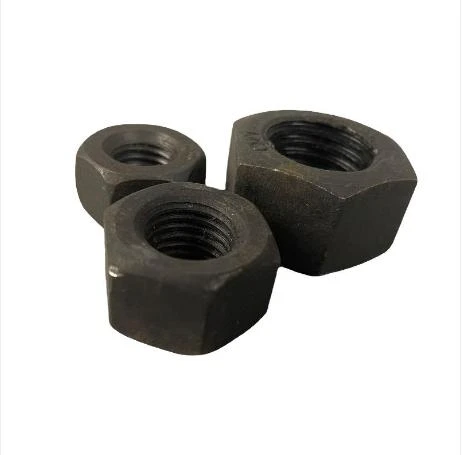

self tapping wood pocket screw
Dez . 03, 2024 18:03 Back to list
self tapping wood pocket screw
Understanding Self-Tapping Wood Pocket Screws A Comprehensive Guide
When it comes to woodworking, the right fasteners can make all the difference in achieving a sturdy and professional finish. Among the myriad options available, self-tapping wood pocket screws have emerged as a favored choice for both amateur and professional woodworkers alike. In this article, we will explore the mechanics, advantages, and applications of self-tapping wood pocket screws, as well as some tips for their effective use.
What are Self-Tapping Wood Pocket Screws?
Self-tapping wood pocket screws are specialized screws designed for use in woodworking projects. Unlike standard screws that require a pre-drilled hole, self-tapping screws feature a pointed tip and a unique thread design that allows them to create their own hole as they are driven into the material. This makes them particularly effective in joining two pieces of wood at an angle, a technique commonly known as pocket hole joinery.
Pocket hole joinery is achieved by drilling an angled hole into the workpiece and then driving a pocket screw into that hole to secure it to another piece of wood. The head of the screw is typically designed to sit flush with the surface of the wood, providing a clean and professional appearance.
Advantages of Using Self-Tapping Wood Pocket Screws
1. Speed and Efficiency One of the major benefits of using self-tapping screws is the time saved on installation. Since they do not require pilot holes, woodworkers can quickly secure joints without the extra step of drilling. This rapid installation is especially advantageous in larger projects or production environments.
2. Strong and Secure Joints The design of self-tapping screws facilitates a strong connection between two pieces of wood. The sharp threads grip the wood fibers tightly, leading to a secure and durable bond that is capable of withstanding tension and stress.
3. Versatility Self-tapping pocket screws can be used in a wide range of woodworking applications, from furniture assembly to cabinetry and framing. Their ability to work effectively in various materials, including softwoods and hardwoods, enhances their utility in any woodworking shop.
4. Aesthetic Appeal The flush head design of pocket screws provides a clean finish, allowing woodworkers to create hidden joints that enhance the overall aesthetic of the finished piece. This is particularly important for furniture and cabinetry that requires a polished look.
self tapping wood pocket screw

5. Reduced Splitting The self-tapping feature minimizes the risk of splitting the wood. Since the screw creates its own hole, it reduces the stress on the wood fibers, making it less likely that the material will crack or break during installation.
Tips for Using Self-Tapping Wood Pocket Screws
1. Choose the Right Size It is crucial to select the appropriate size of pocket screws for your specific project. Generally, the length of the screw should be about 1.5 to 2 times the thickness of the material being joined to ensure a secure hold.
2. Drill Correctly While self-tapping screws eliminate the need for pilot holes, drilling the angled pocket hole accurately is essential for alignment and strength. Use a quality pocket hole jig to ensure consistent and precise drilling angles.
3. Use a Power Driver To drive pocket screws efficiently, a power driver or impact wrench is recommended. This not only speeds up the process but also ensures that the screws are driven to the correct depth without stripping the head.
4. Pre-Draw Holes in Dense Materials For hardwoods or particularly dense materials, it may still be beneficial to drill pilot holes to help guide the screws, preventing excessive force from damaging the workpiece.
5. Check Tightness Regularly After installation, periodically check the screws to ensure they remain tight, especially in high-use projects. Over time, wood can shift and compress, potentially loosening screws.
Conclusion
Self-tapping wood pocket screws are an invaluable tool in the arsenal of any woodworker. Their efficiency, strength, and aesthetic benefits make them a go-to choice for many applications. By understanding how to use them effectively, you can enhance your woodworking projects, achieving a professional finish with robust structural integrity. Whether you are building furniture, cabinetry, or simply tackling home repairs, self-tapping wood pocket screws are worth considering for your next project.
Latest news
-
MS Slotted Channel Fasteners Durable, Pre-Galvanized Mild Steel
NewsApr.29,2025
-
High-Strength Self Tapping Screws for Cast Iron Fast Installation & Durability
NewsApr.29,2025
-
Mild Steel Slotted Channel & Fasteners - Durable, Adjustable Solutions
NewsApr.28,2025
-
ISO Spring Washer - Secure, Durable Fastener with ISO Compliance ISO Spring Washer
NewsApr.28,2025
-
Mild Steel Stud Bolt Fasteners - High Strength & Corrosion Resistant
NewsApr.28,2025
-
M6x45 Shear Bolt - High-Strength Safety Fastener
NewsApr.28,2025

